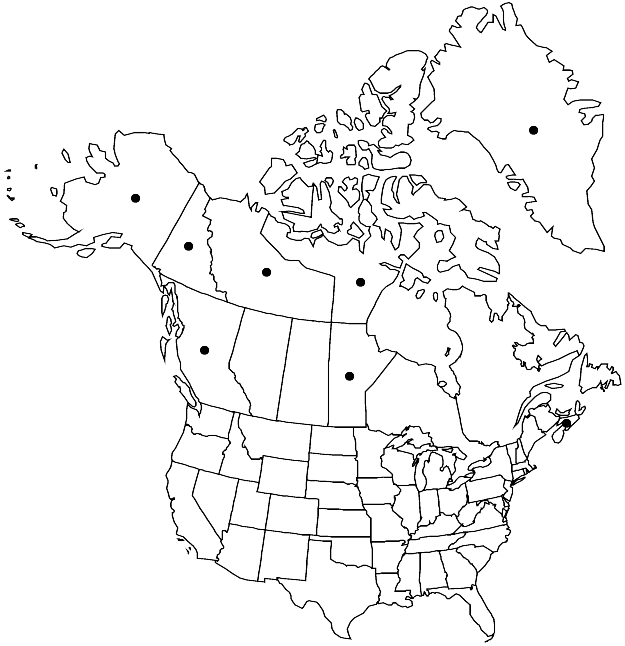Cinclidium arcticum
Kongl. Vetensk. Acad. Handl. 1846: 143. 1848.
Plants 3–6(–12) cm. Stems dark brown. Leaves dark green, reddish brown, or black when old, erect-spreading, ± flat, not strongly reflexed when moist, ovate, ovate-lanceolate, or narrowly elliptic, rarely obovate or orbicular (in depauperate plants), 2.5–3.5 mm; base narrowly short-decurrent; margins narrowly recurved or rarely nearly plane, 1-stratose; apex acuminate or acute, short-apiculate, apiculus sharp or blunt; costa percurrent, excurrent, subpercurrent, or ending well before apex, especially in depauperate plants; medial laminal cells short-elongate or ± isodiametric, (25–)35–60(–80) µm, not in rows, weakly collenchymatous; marginal cells short-linear, in 2–3(–4) rows. Sexual condition dioicous. Seta red or reddish brown, 1.5–4 cm. Capsule light brown, elliptic, 2–3 mm. Spores 25–70 µm.
Phenology: Capsules mature summer.
Habitat: Calciphile, fens, bogs, marshes
Elevation: low to moderate elevations
Distribution

Greenland, B.C., Man., N.W.T., N.S., Nunavut, Yukon, Alaska, Europe, Asia, Antarctica.
Discussion
Cinclidium arcticum is distinguished by its ovate, ovate-lanceolate, or narrowly elliptic leaves with narrowly recurved margins and short-elongate or more or less isodiametric laminal cells. A few reddish brown, depauperate herbarium collections of this species with obovate leaves, subpercurrent costae, and weakly defined margins have been determined as Rhizomnium andrewsianum. However, the presence of longitudinal rows of macronemata along the stem and a stereid band in the costa showed that they are C. arcticum.
Selected References
None.